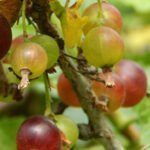Small fruit and vegetable gardens offer a wonderful opportunity for individuals to grow their own fresh produce even in limited spaces. The trend of cultivating small gardens has been steadily increasing as people realize the beauty and benefits of having access to homegrown fruits and vegetables right at their doorstep.
In this article, we will delve into the world of small fruit and vegetable gardens, providing valuable insights on how to create, maintain, and enjoy the bounty from these delightful spaces.
The joy of harvesting ripe tomatoes, crisp lettuce, or juicy berries from your own backyard or balcony is unparalleled. Small-scale gardening not only allows individuals to connect with nature but also promotes sustainability by reducing the reliance on store-bought produce. Whether you have a tiny patio, a sunny balcony, or a compact backyard, there are endless possibilities to transform these spaces into thriving small fruit and vegetable gardens.
From choosing the perfect location for your small garden to selecting the right plants for success, this article will guide you through each step of the process. We will explore tips on maximizing space and productivity through efficient garden layout design, essential tools and supplies needed for maintenance, as well as practical advice on watering, weeding, pest control techniques.
Get ready to be inspired by real-life success stories of small fruit and vegetable gardens that showcase the incredible potential of growing your own food in small spaces.
Choosing the Perfect Location for Your Small Garden
When it comes to creating a small fruit and vegetable garden, one of the most crucial factors to consider is choosing the perfect location for your garden. The right location can make a significant difference in the success of your garden, as it can affect factors such as sunlight exposure, soil quality, and overall productivity. Here are some key considerations to keep in mind when selecting the ideal spot for your small garden:
- Sunlight: Choose a location that receives adequate sunlight, typically at least 6-8 hours of direct sunlight per day for most fruit and vegetable plants.
- Soil Quality: Ensure that the soil in your chosen location is fertile, well-draining, and rich in nutrients. Consider conducting a soil test to determine its pH level and nutrient content.
- Accessibility: Select a spot that is easily accessible for watering, weeding, and harvesting. Ideally, it should be close to a water source and convenient for you to tend to on a regular basis.
In addition to these considerations, you may also want to think about other factors such as proximity to your home (for convenience), protection from strong winds or animals (with fencing or barriers), and available space for expansion if desired. Ultimately, taking the time to carefully choose the perfect location for your small fruit and vegetable garden can set the stage for a successful and bountiful harvest.
Overall, with careful planning and consideration of these key factors, you can create an ideal environment for your small fruit and vegetable garden to thrive. By choosing the perfect location based on sunlight exposure, soil quality, accessibility, and other important factors, you can maximize productivity and enjoyment from your gardening efforts. With the right foundation in place, you’ll be one step closer to reaping the rewards of growing your own fresh produce right at home.
Designing Your Small Garden Layout
When it comes to designing a small fruit and vegetable garden, maximizing the space you have is key to ensuring a productive harvest. One of the best ways to make the most of your limited space is by utilizing vertical gardening techniques.
Vertical gardening involves growing plants upwards on structures like trellises, walls, or fences, which can help save space and allow for more plants in a smaller area. Here are some ideas for incorporating vertical gardening into your small garden layout:
- Consider installing wall-mounted planters or vertical shelves to grow herbs or compact vegetables.
- Use hanging baskets or containers to plant strawberries or trailing plants.
- Build a trellis for vining vegetables like cucumbers, peas, or beans to grow vertically.
In addition to vertical gardening, another way to maximize space in your small garden is by practicing interplanting. This technique involves planting different types of crops close together in the same bed, making use of every available inch of soil.
By choosing companion plants that benefit each other and planting them in proximity, you can increase your yield while deterring pests and improving soil health. Here are some examples of companion planting combinations for small fruit and vegetable gardens:
- Planting basil near tomatoes can improve the flavor of both crops while repelling pests like aphids.
- Growing marigolds alongside cucumbers can deter nematodes and attract beneficial insects like ladybugs.
- Interplanting radishes with lettuce helps with weed control and maximizes space by harvesting two crops from one bed.
By implementing these strategies for maximizing space in your small fruit and vegetable garden layout, you can create a bountiful harvest even in a limited area. Through thoughtful planning and creative solutions, you’ll be able to enjoy an abundance of fresh produce right at your fingertips. Don’t let size constraints hold you back from experiencing the joys of growing your own food – embrace the challenge and reap the rewards of a flourishing small garden.
Essential Tools and Supplies for Small Fruit and Vegetable Gardens
Small fruit and vegetable gardens, though small in size, require a few essential tools and supplies to ensure successful growth and a bountiful harvest. One of the most crucial tools for these gardens is a hand trowel, which is essential for planting and transplanting seedlings. Additionally, having a good pair of gardening gloves will protect your hands while you work with soil, plants, and potentially thorny fruits or vegetables.
A watering can or a hose with an adjustable nozzle is important for keeping your small garden properly hydrated. Depending on the size of your garden, you may also want to invest in a small sprinkler system or drip irrigation setup to ensure consistent watering without wasting water. Moreover, having a sharp pair of pruning shears will help you maintain the health and shape of your plants by trimming away any dead or overgrown stems.
To support climbing plants like tomatoes, cucumbers, or peas in your small garden, consider using trellises or stakes. These structures not only save space but also encourage better air circulation around the plants. Lastly, don’t forget to have quality soil mix and fertilizer on hand to provide the necessary nutrients for your plants to thrive. With these essential tools and supplies, your small fruit and vegetable garden will be well-equipped for success.
| Essential Tools | Supplies |
|---|---|
| Hand Trowel | Gardening Gloves |
| Watering Can | Pruning Shears |
| Trellises/Stakes | Soil Mix/Fertilizer |
Selecting the Right Plants for Your Small Garden
When it comes to selecting the right plants for your small fruit and vegetable garden, there are a few key factors to consider that can lead to a successful and bountiful harvest. One of the most important considerations is the size of your garden space.
Since you are working with limited area, it’s crucial to choose plants that will not only thrive in smaller spaces but also provide high yields. Some great options for small gardens include cherry tomatoes, lettuce, peppers, herbs like basil and mint, strawberries, and dwarf varieties of fruits like peaches or apples.
Another factor to keep in mind when selecting plants for your small garden is the amount of sunlight that your space receives. Most fruits and vegetables require full sun (at least 6-8 hours a day) to grow properly and produce a good harvest.
Before choosing your plants, observe the sunlight patterns in your garden throughout the day and select varieties that are suited for the amount of sunlight available. Leafy greens like kale or spinach can tolerate partial shade, while fruiting vegetables like tomatoes or peppers need ample sunlight for optimal growth.
In addition to considering space and sunlight requirements, it’s also important to think about the climate in which you live when selecting plants for your small garden. Certain fruits and vegetables thrive in specific climates, so make sure to choose varieties that are well-suited for your region.
Consider factors such as temperature fluctuations, humidity levels, and frost dates before finalizing your plant selection. By choosing plants that are well-suited for your small fruit and vegetable garden’s unique conditions, you’ll set yourself up for a successful growing season with a fruitful harvest at the end.
Maintenance Tips for Small Gardens
Watering Practices
One of the most crucial aspects of maintaining a small fruit and vegetable garden is ensuring that your plants receive an adequate amount of water. Since space is limited in small gardens, it’s important to be mindful of how you water your plants to prevent water wastage.
Consider using a drip irrigation system or soaker hoses to deliver water directly to the root zone of your plants, minimizing evaporation and runoff. Additionally, watering in the early morning or late evening can help reduce water loss due to evaporation during the heat of the day.
Weeding Techniques
Weeds can easily take over a small garden and compete with your fruit and vegetable plants for nutrients and sunlight. Regular weeding is essential to maintain the health and productivity of your garden. To effectively control weeds in a small space, consider mulching around your plants with organic materials like straw, wood chips, or shredded leaves.
Mulch not only helps suppress weed growth but also retains soil moisture and regulates soil temperature. Hand-weeding is also a practical method for removing weeds in between rows or tight spaces where tools may not reach.
Pest Control Strategies
Small fruit and vegetable gardens are susceptible to pest infestations that can damage crops if left unchecked. Integrated pest management (IPM) practices can help keep pests at bay while minimizing harm to beneficial insects and wildlife. To deter common garden pests like aphids, caterpillars, or mites, consider planting companion flowers and herbs that attract beneficial insects such as ladybugs, lacewings, or hoverflies that feed on pests.
Additionally, regularly inspecting your plants for signs of pest damage can help you catch any issues early on before they escalate. If necessary, use insecticidal soaps or natural predators as targeted solutions for pest control rather than resorting to harsh chemicals that can harm the environment.
Harvesting and Enjoying the Fruits of Your Labor
Picking the Perfect Produce
When it comes to harvesting produce from your small fruit and vegetable garden, timing is everything. It’s essential to pick fruits and vegetables at the peak of ripeness to enjoy the best flavor and nutrient content.
Take note of each plant’s specific harvesting guidelines, such as firmness, color, or size indicators. For example, tomatoes should be picked when they are fully colored and slightly soft to the touch, while zucchinis are best harvested when they are young and tender.
Storing Your Bounty
Once you’ve gathered your ripe produce from the garden, proper storage is key to maintaining freshness and flavor. Some fruits and vegetables can be stored at room temperature, such as tomatoes or peppers, while others like leafy greens should be refrigerated to prevent wilting. Consider investing in storage containers like reusable bags or bins that can help extend the shelf life of your harvest. Don’t forget about canning or freezing excess produce for long-term enjoyment.
Sharing the Wealth
If your small fruit and vegetable garden yields more than you can consume, consider sharing your bounty with friends, family, neighbors, or local food banks. Sharing freshly harvested produce not only fosters community connections but also reduces food waste.
You can also explore farmer’s markets or community swap meets where you can exchange surplus fruits and vegetables with other home gardeners. Remember that part of the joy of gardening is being able to spread the love of fresh, homegrown produce with others.
Success Stories
When it comes to small fruit and vegetable gardens, many individuals have taken on the challenge of growing their own produce in limited spaces, showcasing the beauty and benefits of such endeavors. One inspiring success story is that of Sarah, a city dweller with a passion for gardening.
Despite having only a small balcony as her outdoor space, Sarah transformed it into a lush mini garden filled with herbs, tomatoes, and strawberries. Her dedication to maximizing every inch of her space serves as a reminder that even the smallest areas can yield bountiful harvests.
Another remarkable example is the community garden project led by a group of neighbors in a suburban area. With limited yard space available to each household, they collectively decided to pool their resources and create a shared vegetable garden. Through collaboration and teamwork, they were able to cultivate an abundance of fresh produce including cucumbers, zucchinis, and peppers. This heartwarming success story highlights the power of community involvement in creating thriving small gardens that benefit everyone involved.
In addition to individual and community efforts, schools and educational institutions have also embraced the concept of small fruit and vegetable gardens as valuable learning tools for students. One school in particular integrated gardening into its curriculum, teaching children about plant growth cycles, sustainable practices, and healthy eating habits through hands-on experience in their own school garden.
The impact of this initiative extended beyond the classroom as students eagerly shared their knowledge with family members, sparking interest in starting their own small gardens at home.
Conclusion
In conclusion, small fruit and vegetable gardens offer a multitude of benefits beyond just providing fresh produce. They can be a source of joy, pride, and satisfaction as you witness the fruits of your labor growing right in your backyard or on your balcony. The sense of accomplishment that comes from nurturing plants from seedlings to harvest is truly rewarding, especially when you can enjoy the delicious flavors of homegrown fruits and vegetables.
For those with limited space, small gardens offer a creative solution to grow your own food in a sustainable and environmentally-friendly way. By carefully selecting the right plants, maximizing space with smart layout designs, and implementing proper maintenance techniques such as watering, weeding, and pest control, even the smallest of spaces can yield bountiful harvests.
The key is to embrace the challenge of working within the constraints of limited space and transforming it into a thriving oasis of fresh produce.
As you embark on your journey of small fruit and vegetable gardening, remember that success is not measured by the size of your garden but by the passion and dedication you put into it. Whether you are planting herbs on a windowsill or creating raised beds in a tiny urban backyard, every effort counts towards creating a more sustainable lifestyle and fostering a deeper connection to nature.
So go ahead, plant those seeds, tend to your plants with care, and savor the delicious rewards that come from nurturing your own small garden paradise.
Frequently Asked Questions
What Kind of Fruits and Vegetables Can Be Grown in Small Spaces?
Fruits like strawberries, tomatoes, peppers, and herbs like basil and cilantro can easily be grown in small spaces like containers or raised beds. These plants do not require a lot of room to thrive and can be successfully cultivated even in limited space.
What Veggies Grow in Small Garden?
Vegetables that grow well in small gardens include lettuce, radishes, green beans, and spinach. These veggies are usually compact in size, making them perfect for growing in confined spaces. With proper care and maintenance, they can produce a bountiful harvest.
What Is the Easiest Fruit and Veg to Grow?
When it comes to easy-to-grow fruits and vegetables, options like cherry tomatoes, zucchini, cucumbers, and mint are great choices for beginners. These plants are low-maintenance and resilient, making them ideal for first-time gardeners looking for a successful harvest without too much effort.

If you’re looking to get into vegetable gardening, or are just looking for some tips on how to make your current garden better, then you’ve come to the right place! My name is Ethel and I have been gardening for years. In this blog, I’m going to share with you some of my best tips on how to create a successful vegetable garden.





